For a week now, I have been seeing butterflies—not just butterflies, but bees and flies. The insects are back. This posting marks a seasonal shift to the inclusion of the delightful world of arthropods. What better way to start than with butterflies.
Winter is difficult for insects—how to make it through the frigid months. The adults of most insects, including butterflies, die in the fall but the species overwinters as eggs, larvae, or pupae. However, one tribe of butterflies (Nymphalini) overwinters as adults. As winter approaches, these adults take shelter under leaves or loose bark. When spring comes, these butterflies are the first to get the new food. Each of the butterflies, below, is a member of this overwintering tribe.
The first butterfly I spotted was one of the anglewings, probably a Oreas Comma. Before landing on the ground, this butterfly had been taking a great interest in another of its species.
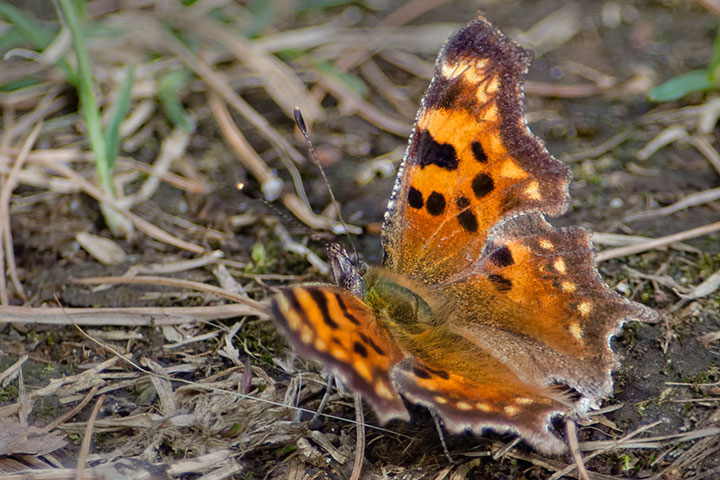
The second butterfly spotted was a Mourning Cloak. This one looks a bit worse for wear from its winter hibernation.
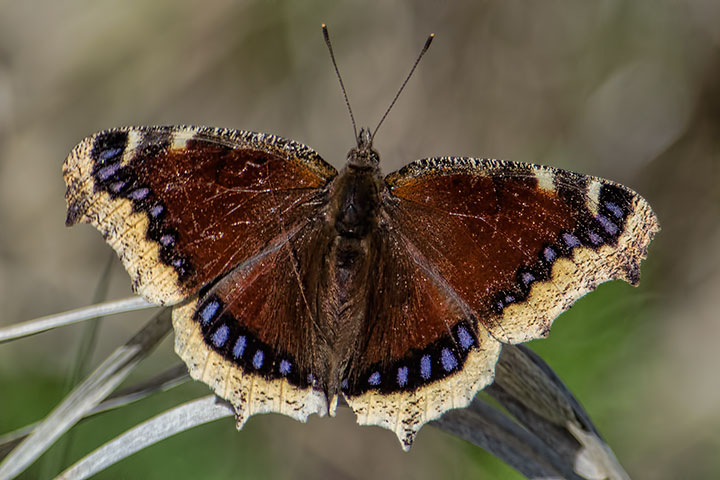
However, it is time to get on with the job of finding a mate. The one Mourning Cloak is sipping nectar from the catkin of a willow.
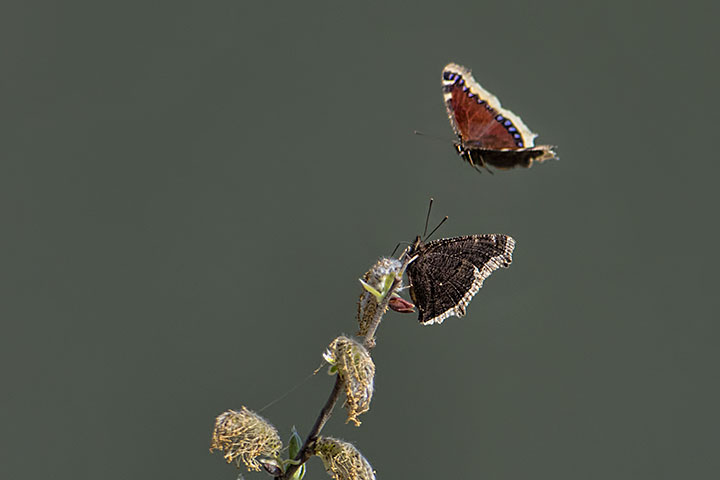
Also sipping nectar from the willow catkin is a Milbert’s Tortoiseshell. The willow was alive with butterflies, bees, flies and wasps. The butterflies, wasps, and flies were after the nectar; the bees were after the pollen. In this picture a mining bee is approaching on the left and a yellow jacket is taking nectar on the right.
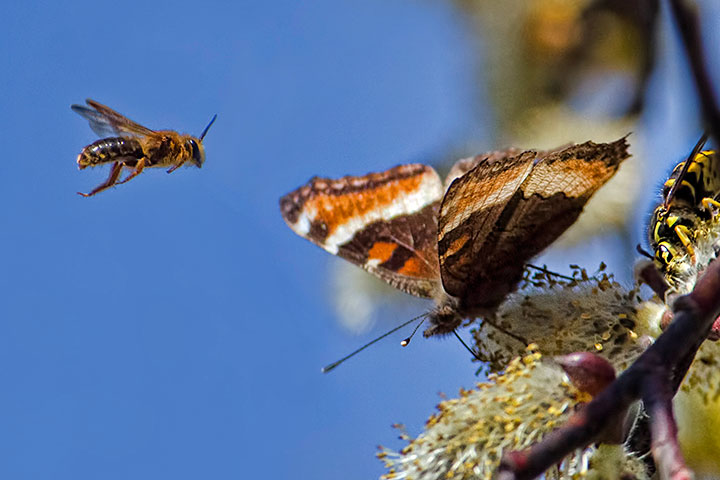
Despite appearances, this Milbert’s Tortoiseshell is not competing with the honey bees in the picture. The butterfly is sipping nectar, while the honey bees are collecting pollen. These two honey bees are loaded: each is carrying a ball of yellow pollen on its corbicula or pollen baskets.
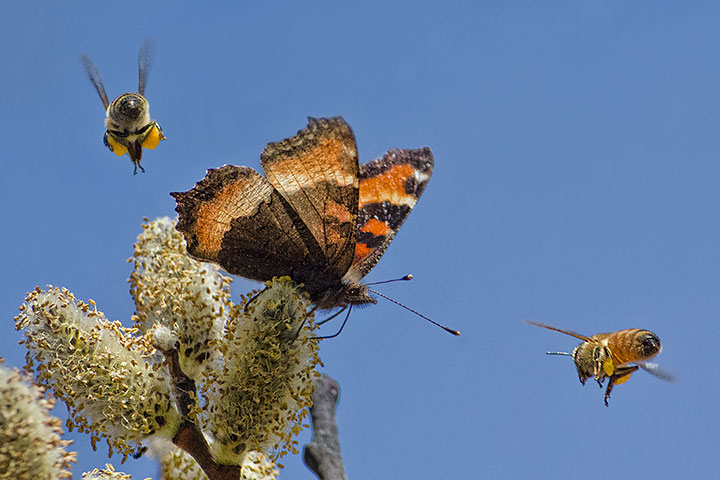
Soon we will see other species of butterflies.

Amazing photos!
Wow! How fascinating to see things close-up – it’s a whole new world!!
It is fascinating that the Nymphalini, unlike other species of butterflies, is able to overwinter. Any insight as to the physiological characteristics that enable them to do this?
Susi, undoubtedly these overwintering butterflies would freeze were they not able to produce their own glycogens—that is, antifreeze.
Fascinating!!
Wonderful pictures Alistair. It’s great to get a peek at some of the finesse the underlays the cycles of Spring 🙂
Have you seen any Bumble bees yet? I learned only last year that they overwinter in the ground!
Marie, I haven’t seen any yet. I believe that it is only the queen that overwinters—the rest die in the fall.
Yes, fascinating. This is the best; education delivered on the wings of these beauties.